"The Emperor's Private Paradise: Treasures from the Forbidden City" @ the Metropolitan Museum of Art
Panel (hanging). From Yanghe Jingshe Cloisonné and zitan, 57 ¼ x 29 ¾ inches (145.5 x 75.5 cm).
NEW YORK (REUTERS).- Objects and artwork from the Forbidden City's hidden inner sanctum, a sealed off compound built in high luxury for the Chinese emperor's retirement, will be unveiled in New York on Tuesday.
"The Emperor's Private Paradise: Treasures from the Forbidden City" opens at the Metropolitan Museum of Art on February 1 and runs until May 1.
The show features 90 objects from the 27-building garden sanctuary, built at Emperor Qianlong's request in the northeast corner of Beijing's Forbidden City.
Known as the Qianlong garden, the compound was supposed to be for the emperor's retirement, but he never relinquished the throne and the space remained unchanged and unoccupied since its 1776 completion.
It is made up of separate buildings meant for different activities, such as the "supreme chamber of cultivating harmony," or the "building of luminous clouds."
This secret garden, which curators said showcased the epitome of late 18th century Chinese skill, has remained closed to the public since it was built. It has been undergoing restoration since 2001, with expected completion in 2019.
Curators said on Monday that the exhibition was a unique opportunity to view the objects since they would likely return to China never to travel again.
"The garden was meant to be a lasting testimony to the efficacy of his (the emperor's) rule," said Maxwell Hearn, the curator of the exhibition. "Every surface was embellished with the finest workmanship, the most precious materials imaginable."
The show regroups Buddhist icons, murals, furniture, decorative objects and painted scrolls that have been restored.
But as much as the Qianlong garden embodied the height of late 18th century Chinese craft, it also showcases various Western influences.
Traditional motifs of the bamboo, plum tree blossoms and pine trees in one representation are juxtaposed to lavishly decorated screens inlaid with glass, a Western import. Western techniques of proportion and representation are incorporated into some of the scrolls.
But beyond decorative aspects Western influence was kept somewhat at bay, Hearn said. Although every European country competed for his favor in order to get access to trade routes, the emperor failed to grasp Europe's rise.
"Because this emperor was so surrounded by the wealth of his environment, he failed to understand the importance of bridging East and West," Hearn said. "That was the myopic vision of the emperor.". (Reporting by Basil Katz; Editing by Patricia Reaney)
Portrait of the Qianlong Emperor (1711–1799). Hanging scroll; ink and colors on silk; Image: 99 5/8 x 59 1/16 in. (253 x 150 cm); Overall: 148 7/16 x 78 3/8 in. (377 x 199 cm). Lent by the Palace Museum, Beijing This grandly scaled depiction of the Qianlong Emperor is one of several nearly identical formal portraits that were made for ritual use in the Imperial Ancestral Hall and elsewhere in the palace. In keeping with Chinese conventions of physiognomy, Qianlong's face is fully frontal; only his arms break with the otherwise rigid symmetry of his pose. However, the subtle use of light and shade to model his facial features as well as the folds of his robe reveal the influence of Western-style pictorial techniques, which Qianlong favored for portraiture and other documentary or commemorative purposes.
Despite his idealized features, the emperor's advancing age is quite apparent. However, seated on a golden dragon throne and dressed in his robes of state, his lifesize portrait still conveys an imposing sense of imperial majesty.
Portrait of the Qianlong Emperor in Ancient Costume. Hanging scroll; ink and colors on silk; Image: 98 13/16 x 53 15/16 in. (251 x 137 cm). Lent by the Palace Museum, Beijing
The Qianlong Emperor was a master in using Western-style illusionistic images of himself in different guises to create alternate personae. Here, the youthful emperor had himself portrayed as a cultured Chinese scholar. Sitting in his study appointed with classical Chinese-style furniture, he is poised, brush in hand, to transcribe a poem onto a banana leaf. The only detail that distinguishes him from a traditional scholar is his ornate robe covered with auspicious motifs of flowers and cranes in bright, contrasting colors.
Interior Scene. From the Supreme Chamber for Cultivating Harmony (Yanghe Jingshe). Ink and color on silk; Image: 10 ft. 8 in. x 10 ft. (325.1 x 304.8 cm). Lent by the Palace Museum, Beijing
Introduced to China by Jesuit missionaries, European-style perspectival paintings were appreciated not only as a playful entertainment but also as a device for "expanding" the intimately scaled rooms the Qianlong Emperor favored for his personal living quarters. In addition to using realistic, Western-style portraiture techniques to present himself in different roles—Manchu warrior, Chinese scholar, or Buddhist sage—the emperor delighted in using Western pictorial devices to create illusions such as this trompe-l'oeil ("fool the eye") mural, which would have been painted by a Chinese artist from the imperial workshop who had been trained by European missionary artists.
The mural offers a true-to-life glimpse into many of the rooms within the Qianlong Garden. In the foreground an ornate doorframe set with pictorial inserts—an example of which is on display in the adjacent gallery—frames a view of an elegantly coiffured lady offering flowers to a child. Resting upon an altar table set against the back wall are a bronze ritual vessel, bound books, and vases of bronze and porcelain; behind the table hang three paintings. The central landscape is a hanging scroll so tall that its mounting has been attached to the ceiling, thus underscoring the small scale of the residential rooms. Flanking the scroll are two vertical paintings that have been pasted directly onto the wallpaper—another typical decorative strategy of the era. Side entrances to the room are concealed behind blue-and-green cloth curtains.
Very few examples of trompe-l'oeil murals from the 1700s have survived in situ in the Forbidden City. This example is one of three such paintings that were recently cleaned and relined with supportive backing papers by Palace Museum conservators.
Partitions and Entablature. From the Belvedere of Viewing Achievements (Fuwangge). Purple sandalwood (zitan) and cloisonné with inset paintings and calligraphies on silk; Overall: 12 ft. 1/2 in. x 11 ft. 3 1/16 in. x 25 9/16 in. (367 x 343 x 65 cm). Lent by the Palace Museum, Beijing
This assembly framed one of the thrones facing each of the four cardinal directions on the first floor of the Belvedere of Viewing Achievements, the Qianlong Garden's largest and tallest building. In the late 1800s, the powerful Dowager Empress Cixi (1835–1908), as mother of the Tongzhi emperor (r. 1861–1875), was entitled to live in the Tranquility and Longevity Palace and enjoy the Qianlong Garden. She redecorated some of the buildings for her sixtieth birthday celebration in 1895. She replaced the original paintings and calligraphies on these partitions with works by her own court artists and officials.
Ornamental Lingbi Rock. From the second courtyard, before the Hall of Fulfilling Original Wishes (Suichutang). Limestone; H. 25 1/2 in. (64 cm); W. 44 1/8 in. (112 cm); D. 15 3/4 in. (40 cm). Lent by the Palace Museum, Beijing
The Qianlong Emperor was an aficionado of rocks. This example is one of four placed on pedestals in the second courtyard of the garden.
In China, connoisseurship of rocks was comparable to that of knowledge of painting and calligraphy. Favored specimens were prized for their dynamic forms, numerous perforations, and wrinkled surfaces. Larger rocks were often placed on pedestals in the manner of sculptures; smaller examples were displayed indoors on wooden stands. This specimen, with a striking jagged silhouette and deep-fissured surface, embodies a popular maxim: "Although they are really just fragments of mountains and chunks of stone, they should have a feel of the wilderness about them."
Panel. From the Studio of Exhaustion from Diligent Service (Juanqinzhai). Sandalwood, jade, lapis lazuli, malachite, purple sandalwood (zitan), and glass; H. 43 1/2 in. (110.5 cm); W. 75 3/4 in. (192.3 cm); D. 3 1/4 in. (8.3 cm). Lent by the Palace Museum, Beijing
The plum, which blooms in late winter—about the time of the Chinese New Year—traditionally heralds the coming of spring. It symbolizes purity and the ability to thrive untainted even in harsh times. For fifteen hundred years, the flower in all its stages of growth has been a common motif in Chinese painting and poetry. Many furnishings in the Qianlong garden incorporate representations of blossoming plum delicately wrought from precious materials. This panel, depicting a thousand-year-old tree in full bloom, was presented as a gift to the emperor with wishes for longevity.
Panel. From the Supreme Chamber for Cultivating Harmony (Yanghe Jingshe). Cloisonné and purple sandalwood (zitan); Overall: 57 1/4 x 29 3/4 in. (145.4 x 75.6 cm). Lent by the Palace Museum, Beijing
In 1776, the Qianlong Emperor held a grand banquet to celebrate the completion of the Tranquility and Longevity Palace (Ningshougong) and its garden. The event coincided with the New Year and the eighty-fifth year of his mother's birth. Musical and operatic performances took place on a new three-story outdoor stage—the largest in the Forbidden City—called the Pleasant Sounds Belvedere, which is located just beside the Qianlong Garden. One year later, his mother passed away and, as a memorial, the emperor commissioned this sumptuous panel depicting the celebration.
Lush trees and exaggerated mountainlike rockeries encircle a courtyard where courtiers look on as actors perform on an open-air stage. Low Manchu-style tables set with small dishes for the banquet line the left side of the compound. Spiral and floral patterns surrounding the inscription enhance the golden sky. Colorful buildings express the exuberant feel of the newly minted palace and its garden.
Qianlong Emperor (1711–1799; r. 1736–95), Calligraphic Inscription, dated 1776. From the Belvedere of Viewing Achievements (Fuwangge). Ink on paper; Image: 37 x 73 1/4 in. (94 x 186 cm). Overall with mounting: 38 3/8 x 76 in. (97.5 x 193 cm). Lent by the Palace Museum, Beijing
An avid calligrapher, the Qianlong Emperor developed a distinctive style characterized by regularity and restraint. Inscribed on gold-painted paper made specifically for the court, this text describes his anticipation of retirement.
Wei Heling (act. late 18th century), Landscape. From the Supreme Chamber for Cultivating Harmony (Yanghe Jingshe). Hanging scroll; ink and colors on paper; Image: 79 15/16 x 29 3/4 in. (203 x 75.6 cm). Lent by the Palace Museum, Beijing
Many buildings within the Qianlong Garden were decorated with calligraphies or paintings that were pasted directly onto the wallpapered surfaces of interior walls—a practice that became especially popular in the 1700s. In its original location, this tall vertical panel functioned as a fake door (jiamen); a cloth valance above it furthered the illusion that the landscape was painted on a curtain covering a doorway.
The landscape, by a little-known court painter, evokes antique prototypes as reinterpreted by Wang Hui (1632–1717), the early Qing artist whose painting style became the orthodox model for later court painters.
Brush pot. Jade; H. 5 7/8 in. (15 cm); W. 5 1/2 in. (14 cm). Lent by the Palace Museum, Beijing
Container. Carved cinnabar lacquer; includes album of forty two paintings and calligraphies by the Qianlong Emperor; H. 6 7/8 in. (17.5 cm); W. 6 5/16 in. (16 cm); D. 3 15/16 in. (10 cm). Lent by the Palace Museum, Beijing
This carved lacquer container for storing miniature paintings, among them the two scrolls on view in the exhibition, has been fashioned in the shape of several handscrolls and albums piled atop a stand. Such cleverly designed boxes concealing other works of art were a favorite amusement of the Qianlong Emperor.
Throne. From the Supreme Chamber for Cultivating Harmony (Yanghe Jingshe). Purple sandalwood (zitan), bamboo, jade, semiprecious stones, and lacquer; H. 38 1/2 in. (98 cm); W. 46 1/4 in. (117.5 cm); D. 33 1/16 in. (84 cm). Lent by the Palace Museum, Beijing
This throne incorporates the collaborative efforts of many different craftsmen. Furniture makers designed the basic mortise-and-tenon structure, while lacquer specialists and painters decorated the panels with gold and colored lacquer. Bamboo experts sliced stalks into threads that they then dyed and arranged into geometric marquetries; they also removed the inner skin of the bamboo to create a flat, carvable surface, which was adhered to the seat in a pattern of plum blossoms floating on cracked ice. Woodworkers fashioned tropical purple sandalwood into branches and stems, while stonemasons shaped blossoms of semiprecious stones and mother-of-pearl for the backrest. As a final touch, jade carvers created dragon ornaments for the front corners of the seat.
As artisans skilled in these traditional techniques were needed for conservation, authorities at the Palace Museum sent notices to cultural bureaus across the country. He Fuli, an elderly craftsman from Dongshan County, Zhejiang Province, knew how to fabricate bamboo-thread marquetry, and he traveled to Beijing to assist and teach others the craft. Together with Palace Museum lacquer specialists and expert jade carvers, they restored the throne to its original state.
Screen of Sixteen Double-Sided Panels. From the Building of Luminous Clouds (Yunguanglou). Purple sandalwood (zitan), lacquer, jade, and gold paint; Each panel with legs: H. 84 in. (213.4 cm); W. 28 in. (71.1 cm); D. 2 1/2 in. (6.4 cm).. Lent by the Palace Museum, Beijing
This set of sixteen jade-inlaid panels depicting luohans, the enlightened disciples of the Buddha, was built into a niche within of the Building of Luminous Clouds. When Palace Museum conservators removed the screen for restoration, they discovered that the backs of the panels were sumptuously decorated with symbolic botanical motifs that had been hidden for more than two hundred years. The bizarre figures on the screen are based on paintings of the sixteen luohans by the monk-artist Guanxiu (832–912), who claimed that the images had come to him in a dream. The figures' grotesque forms are perhaps meant to convey the idea that one cannot judge someone's spiritual achievement by external appearance alone.
The Qianlong Emperor saw these paintings in Hangzhou while on his southern inspection tour of 1757 and had a court artist make copies. Inspired by the emperor's visit, the temple abbot had artisans replicate the paintings in stone so that rubbings of the images could be disseminated. Years later, a provincial governor sought to curry favor with the emperor by commissioning this screen after the rubbings. Consequently the emperor ordered the construction of a special niche to house the gift within the Building of Luminous Clouds.
Mandala. Cloisonné H. 22 1/2 in. (57 cm); Diam. 19 in. (48.2 cm). Lent by the Palace Museum, Beijing
A mandala is an abstract diagram of the universe used in Buddhist meditation. While they most commonly take the form of painted or woven hangings, the Qianlong Emperor commissioned a number of luxurious three-dimensional cloisonné mandalas.
Hanging Panel with Niches. From the Building for Enjoying Lush Scenery (Cuishanglou). Purple sandalwood (zitan), painted and gilt clay, and colors on silk; Overall: 63 x 36 5/8 x 2 15/16 in. (160 x 93 x 7.4 cm). Lent by the Palace Museum, Beijing
The Qing dynasty emperors adhered to a form of Esoteric Buddhism practiced in Mongolia and Manchuria as well as in Tibet. In this highly structured panel, three-dimensional painted-clay figures (known in Tibetan as tscha tscha) represent Buddhist deities, teachers, and other beings. The two largest figures depict the emperor as an emanation of Manjushri, the Bodhisattva of Enlightened Wisdom, and as a chakravartin (literally, "wheel-turning-king"), a just ruler who brings peace and prosperity to his subjects. In the large round aperture in the sky above the emperor is his Buddhist mentor Rolpay Dorje, and farther above is Tsongkhapa (1357–1419), founder of the Yellow Hat sect of Tibetan Buddhism to which the emperor subscribed. The finely delineated building, flowers, rocks, and mountains reflect Chinese painting traditions and suggest that the shrine was produced in the imperial workshops.
Statues of Amitabha and Stand. From the Building for Enjoying Lush Scenery (Cuishanglou). Gilt copper and purple sandalwood (zitan); Overall: H. 57 22 7/16 in. (57 cm); W. 39 9/16 in. (100.5 cm); D. 8 1/4 in. (21 cm). Lent by the Palace Museum, Beijing
This set of five gilt statues of the Amitabha Buddha as well as the purple sandalwood altar are part of the paraphernalia used in ritual practices that took place in the Building for Enjoying Lush Scenery.
Shrine and Statue of Jingang (Vajrayaksk). From the Building for Enjoying Lush Scenery (Cuishanglou).. Painted Yingde stone, gilt copper, silver, and glass; Shrine: H. 15 5/8 in. (39.7 cm); W. 11 in. (28 cm); D. 7 1/2 in. (19 cm); Statue: H. 5 1/8 in. (13 cm). Lent by the Palace Museum, Beijing
Contained within an elaborately worked silver shrine, this statue of a Tibetan Buddhist guardian deity was carved from a stone quarried in Guangdong Province, which was then painted and embellished with a gilt-copper crown and implements.
Window. From the Three Friends Bower (Sanyouxuan). Purple sandalwood (zitan) and glass; H. 55 1/4 in. (140.4 cm); W. 80 5/8 in. (204.8 cm); D. 3 9/16 in. (9 cm). Lent by the Palace Museum, Beijing
This massive window frame is carved with representations of pine, bamboo, and blossoming plum—the Three Friends of Winter. The window is typical of the extravagant use of luxurious materials that went into the construction of the garden. Carved from precious purple sandalwood (zitan), the middle of this panel was slotted to receive a large sheet of glass, a rare commodity in the eighteenth century. Sitting in the Three Friends Bower, the Qianlong Emperor would have thus been able to gaze through this window to the rockeries beyond.
Chair. From the Purification Ceremony Pavilion (Xishangting). Rootwood; H. 41 1/2 in. (105.4 cm); W. 23 1/2 in. (59.7 cm); D. 29 in. (73.7 cm). Lent by the Palace Museum, Beijing
Chinese paintings from as early as the eleventh century depict Buddhist and Daoist figures seated on rustic rootwood chairs as a way of suggesting their indifference to worldly goods and their synchrony with the natural forms of the cosmos. By the Ming dynasty (1368–1644), members of the urban elite had begun to commission furniture carved to resemble naturally contorted roots. Imperial inventories record that rootwood chairs and tables furnished the Purification Ceremony Pavilion in the garden's first courtyard. The name and design of this structure refers to ancient purification traditions associated with a poetry-writing contest in which players would sit by a stream, drink from wine cups floated down a waterway, and write poems. In the Qianlong Garden, an abstracted watercourse—connected to a well—was channeled into a stone floor so that the emperor and his companions could reenact the tradition.
Pair of Screens. From the Three Friends Bower (Sanyouxuan). Purple sandalwood (zitan), glass, jade, agate, and crystal; Each: H. 82 11/16 in. (210 cm); W. 41 3/4 in. (106 cm); D. 23 5/8 in. (60 cm). Lent by the Palace Museum, Beijing
These imposing screens epitomize the high level of craftsmanship, as well as the lavish use of materials, found throughout the Qianlong Garden. They also demonstrate how all the furnishings in a given space might be dedicated to a single auspicious theme, such as the "three friends of winter"—traditional emblems of a long, vigorous life. The incorporation of glass into the panels reveals the emperor's delight with the material, newly imported from Europe.
Vase. Porcelain; H. 13 3/8 in. (34 cm); Diam. 4 13/16 in. (12.3 cm). Lent by the Palace Museum, Beijing
This polychromatic vase is decorated with a narrative scene of four old men conversing under a pine tree in a garden setting. It may refer to the four historical figures collectively known as the Hoary Four of Mount Shang, renowned scholars who spent most of their lives in reclusion due to their discontent with the political situation during the dynastic change from Qin (221–206 B.C.) to Han (206 B.C.–A.D. 220). They have been esteemed as models of the reclusive literati ideal. The vividly rendered figures and landscape motifs in multiple colors attest to the technical proficiency of ceramists during the Qianlong period.
Pair of Cabinets. From the Bower of Purest Jade (Yucuixuan). Wood, lacquer, and gilding; Each: H. 46 7/8 in. (119 cm); W. 34 7/16 in. (87.5 cm); D. 14 3/16 in. (36 cm). Lent by the Palace Museum, Beijing
The Qianlong Emperor's interest in foreign techniques and aesthetics was not limited to Europe. Like his father and grandfather, he was also intrigued by certain Japanese arts, particularly the styling of gold designs on black lacquer. The decoration on these cabinets includes depictions of Japanese-style figures enjoying a spring picnic by a river.
Partitions. From the Building for Enjoying Lush Scenery (Cuishanglou). Purple sandalwood (zitan), bamboo, and painted glass; Overall: 77 15/16 x 77 3/16 x 2 15/16 in. (198 x 196 x 7.5 cm). Lent by the Palace Museum, Beijing
The frosted glass panels in these interior partitions, painted to resemble embroidered silk, allow light to enter a room even when they are closed.
Vase.. Porcelain with malachite glaze; H. 12 3/16 in. (31 cm); Diam. of base 4 7/8 in. (12.4 cm). Lent by the Palace Museum, Beijing
This lavishly decorated vase features a realistically rendered sash tied at the ends. Its trompe-l'oeil accuracy rivals that of European murals painted according to rules of mathematical perspective.
Pair of Table Screens. From the Building for Enjoying Lush Scenery (Cuishanglou). Purple sandalwood (zitan), glass, silver foil, and paint; Each: 26 3/8 x 28 3/8 in. (67 x 72 cm). Lent by the Palace Museum, Beijing
Just as European consumers delighted in chinoiserie, including fanciful depictions of Chinese people and architecture, this pair of screens showing a European-style landscape and cityscape attests to the Qianlong Emperor's similar fascination with foreign subjects.
While European traders in the southern port of Guangzhou (called Canton by Europeans) commissioned Chinese artists to reproduce reverse glass paintings such as these for export, these two examples were, apparently, produced for the Chinese court. Such screens, backed with silver foil, would have served to both protect and reflect the light from desk lamps or candles.
Clock. Gilt copper, enamel, and glass; H. 41 5/16 in. (105 cm); W. 24 13/16 in. (63 cm); 22 1/16 in. (56 cm). Lent by the Palace Museum, Beijing
The Qianlong emperor was very fond of European clocks with their intricate internal mechanisms. Europeans, eager to gain his favor, brought him numerous complex examples, which he included among his collection of traditional Chinese masterpieces.
Table Screen. From the Building for Enjoying Lush Scenery (Cuishanglou). Purple sandalwood (zitan), glass, silver foil, and paint; Overall: H. 41 9/16 in. (105.5 cm); W. 25 3/8 in. (64.5 cm); D. 12 5/8 in. (32 cm). Lent by the Palace Museum, Beijing
This table screen, which served to protect a lamp or candle from drafts, features a European couple in a landscape—a clear indication of the Qianlong Emperor's fascination with foreign motifs and styles. It was probably a gift from an official in Guangzhou (called Canton by Westerners), where European traders had long commissioned Chinese artists to reproduce European-style reverse-glass ("eglomise") paintings for export to Europe. This ancient Roman technique involves drawing onto the back of a piece of glass and then laying down a sheet of silver leaf, which turns unpainted areas into a mirrorlike surface.
Throne with Footstool. From the Belvedere of Viewing Achievements (Fuwangge). Purple sandalwood (zitan) and cedar; Throne: H. 44 1/8 in. (112 cm); W. 50 3/16 in. (127.5 cm); D. 31 5/16 in. (79.6 cm); Base: H. 20 1/2 in. (52 cm); Foot stool: H. 6 1/8 in. (15.6 cm); W. 25 1/4 in. (64.2 cm); D. 12 3/4 in. (32.3 cm). Lent by the Palace Museum, Beijing
This grand throne is lavishly decorated with intricate curves along its top edges. The finely carved ornamentation on the back and side panels depicts deer in a mountain landscape with pine trees, leafy bushes, and grass. While the pine symbolizes longevity and the virtue of perseverance, the deer is associated with Buddhist paradise and is a homophone for the Chinese character for "successful career."

/https%3A%2F%2Fprofilepics.canalblog.com%2Fprofilepics%2F1%2F0%2F100183.jpg)
/https%3A%2F%2Fstorage.canalblog.com%2F03%2F02%2F119589%2F96711876_o.jpg)
/https%3A%2F%2Fstorage.canalblog.com%2F11%2F31%2F119589%2F94773502_o.jpg)
/https%3A%2F%2Fstorage.canalblog.com%2F20%2F83%2F119589%2F94772815_o.jpg)
/https%3A%2F%2Fstorage.canalblog.com%2F26%2F72%2F119589%2F75604929_o.jpg)
/https%3A%2F%2Fstorage.canalblog.com%2F59%2F60%2F119589%2F26458628_o.jpg)
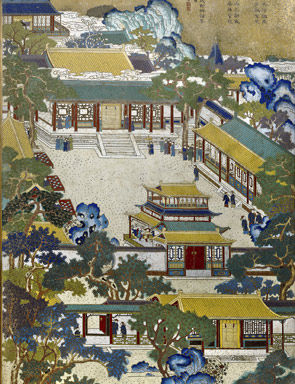








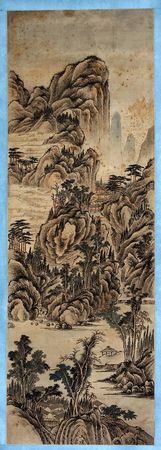






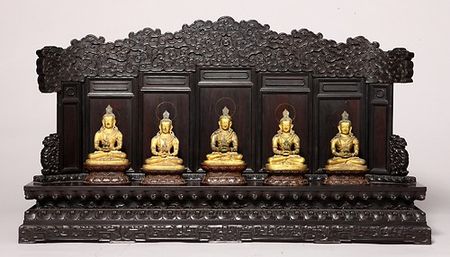
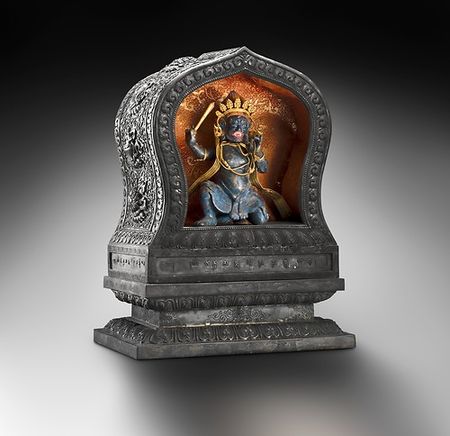
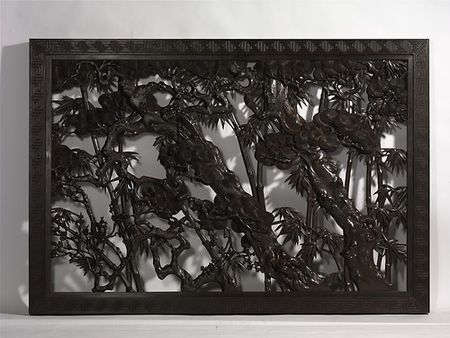


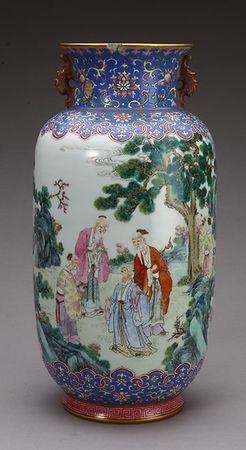


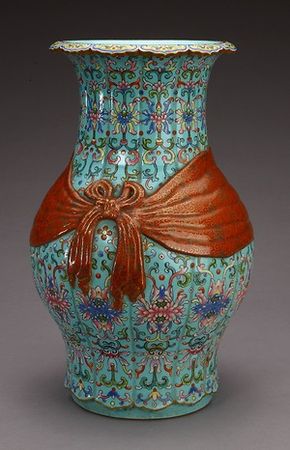






/image%2F1371349%2F20240425%2Fob_c453b7_439605604-1657274835042529-47869416345.jpg)
/image%2F1371349%2F20240425%2Fob_59c6f0_440358655-1657722021664477-71089985267.jpg)
/image%2F1371349%2F20240425%2Fob_07a28e_440353390-1657720444997968-29046181244.jpg)
/image%2F1371349%2F20240425%2Fob_0b83fb_440387817-1657715464998466-20094023921.jpg)